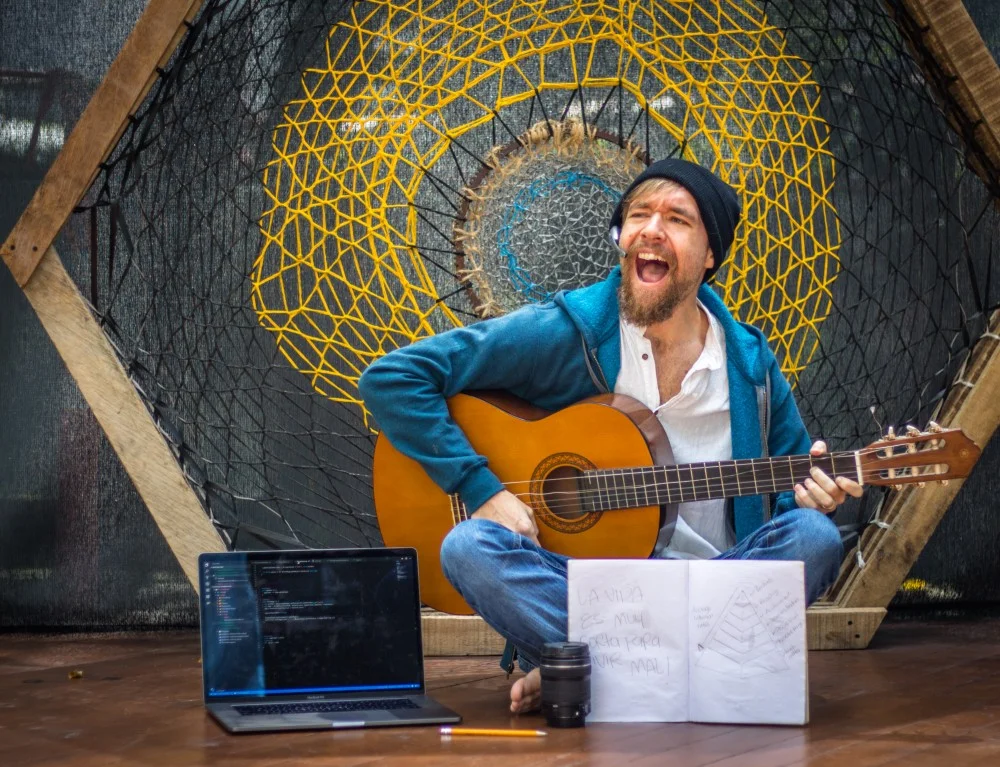Cover Photo by me in Uganda
When my wife and I left Toronto to travel the world for a year, we didn’t want to just see sights and selfishly “take from the world”, we also wanted to give back, and we thought volunteering aboard was a good way to do it.
We ended up volunteering in Bangalore, Siem Reap and Busan during that trip, and in Uganda during a different trip.
Having done it only 4 times, I certainly don’t consider myself an expert on the subject, but I’ve been asked the same questions multiple times and I think it’s worth sharing to help anyone wishing to volunteer aboard.
The following questions come from Maeghan Smulders:
1) how did you pick what organizations to volunteer with / how did you find them?
You can find travel expos in most major cities in the world. The general purpose ones usually have a few booths for volunteering organizations. But there are also volunteering-specific expos, like the Go Global Expo in Canada.
That’s where we found a good match for us. We had two potential opportunities: one in Ghana and one in Bangalore.
As for choosing the organization, we looked into projects we could do together, the reputation and seriousness of the business, the reviews and the location. Prices were pretty much all the same.
We picked a location that was on our way and where we really wanted to go. In fact, we planned the first half of our travels based on the project we chose in Bangalore.
We were serious people looking for serious work. It wasn’t a checkbox for us. It wasn’t to put in our resume. Some organizations were more catered to less serious people. And I’m not judging here, but it’s just not what we were looking for.
For the projects in Siem Reap and Busan, we found them through workaway.info. It’s a great website for finding projects where you exchange your time for lodging and sometimes food. It’s a great way to help local business owners or families while you’re abroad.
I also want to point out that we’ve met travelers and know people who do volunteer work through their religious institution, so it’s worth checking out for some people. We haven’t done it ourselves though.
2) did you apply or pay fees to do so? Did you notice a difference in opportunities where you have to pay vs free?
For the Bangalore project mentioned above, we paid an organization a fee.
They took care of our lodging, airport pickup, security, etc. The owner also took us on weekend cultural trips quite frequently. Here’s one I took part of: Ancient Jain Temples. We had a terrific experience with them.
The Siem Reap, Busan and Uganda projects were free. In fact, we got free lodging and food in exchange for our work.
In Siem Reap, we helped the AngkorHUB co-working/co-living space. A place I went back to for 2 months 7 months ago.
In Busan, we helped at the LZone Cafe for conversation exchanges.
In Uganda, it was an organization my wife started volunteering for remotely when we came back to Canada: Sundara. It’s a USA-based company.
The difference between paid and non-paid seemed to be on support mainly. For people who are concerned about security and support, paid volunteer experiences are the way to go. For more adventurous and potentially more authentic volunteer experience, free is sometimes better.
We had incredible experiences both when we paid and when we didn’t pay.
3) the software projects you did — did you identify the problem and solution yourself? Or was it a request from one of the NGOs that needed help?
When volunteering abroad, it’s hard to find projects that require hard professional skills.
One, it’s hard to find people willing to do it for free, and two, it’s rarely something that can sustain itself when you’re gone.
I was never meant to do software-related tasks in the projects I volunteered for, yet I did do it at AngkorHUB and LZone Cafe. I went there doing what I was meant to do, saw they had needs and proposed solutions.
4) do you continue to maintain the projects you created?
Sustainability is a key concept of any good volunteer project. We always aim to do things that are sustainable.
My work in Bangalore was to support teachers of a skill development centre. I did give a class or two, but it was always meant to teach the teacher. That way, the teachers keep the knowledge and can teach it to all their future students.
My wife put up a hygiene education workshop with the help of a local Indian employee. She presents the workshop all around India now.
In Siem Reap, the owner is a software developer himself, so he maintained the project after.
In Busan, I think they ended up not using the software after I was gone. I had proposed to maintain it, but since I was coming back to North America right after, I couldn’t afford not to do it for money.
In Uganda, we helped raise funds to build a borehole well for a village that had no access to clean water. The fund also covers maintenance for 10 years. The village leaders were taught on how to do the maintenance of the well.
5) did you organize the volunteer opportunities before traveling? Or coordinate while on the road?
We organized the Bangalore project before leaving, same with the Uganda project after.
The Siem Reap project, we found it on the go, 2–3 weeks before going. We did a Skype interview with the owner while we were in Vietnam. That same week, we did a Skype interview for the project in Busan, which was a few months after.
Organizing it on the road is definitely feasible. It’s just that it might be harder to get access to travel expos.
LZone Cafe is always looking for volunteers.
Reaching Hand, the local organization we volunteered for in Bangalore, is also always looking for volunteers. They are an excellent organization and we are very happy to see them again while we’re there next month.
Conclusion
Travel expos are a great place to find volunteer experiences that provide better support and security, but for a fee.
Workaway.info is a great place to find authentic experiences to help locals in exchange for food and lodging.
Sustainability for volunteer projects is an important concept you should always consider. Projects that are not sustainable may hurt more than they help in the long run.
Organizing volunteer work while already abroad is definitely feasible, especially if you’re flexible in your travel plans. It’s also a great way to have an impact on locals while reducing your costs dramatically.
Hope this helps!
Thanks for reading! :)










